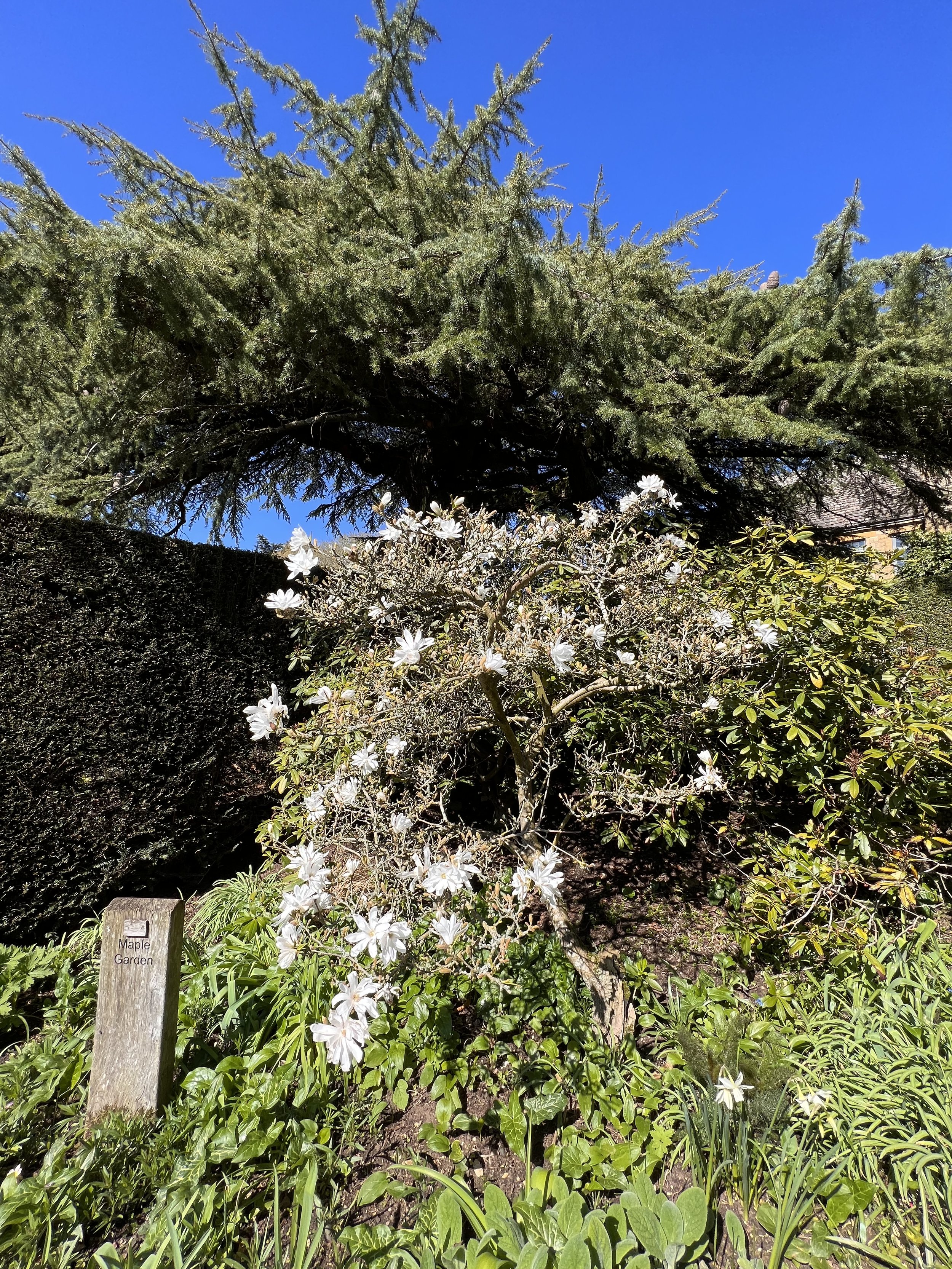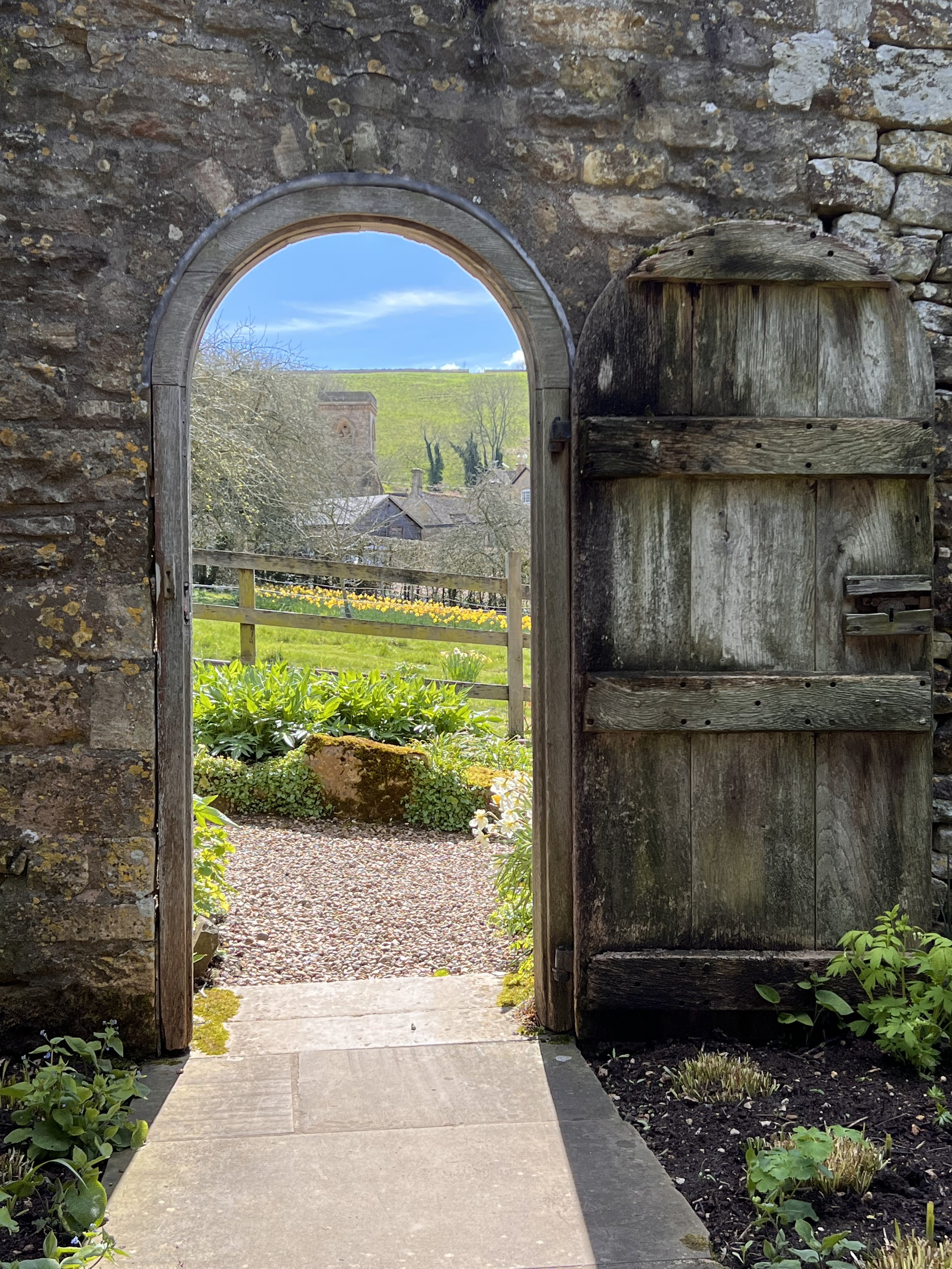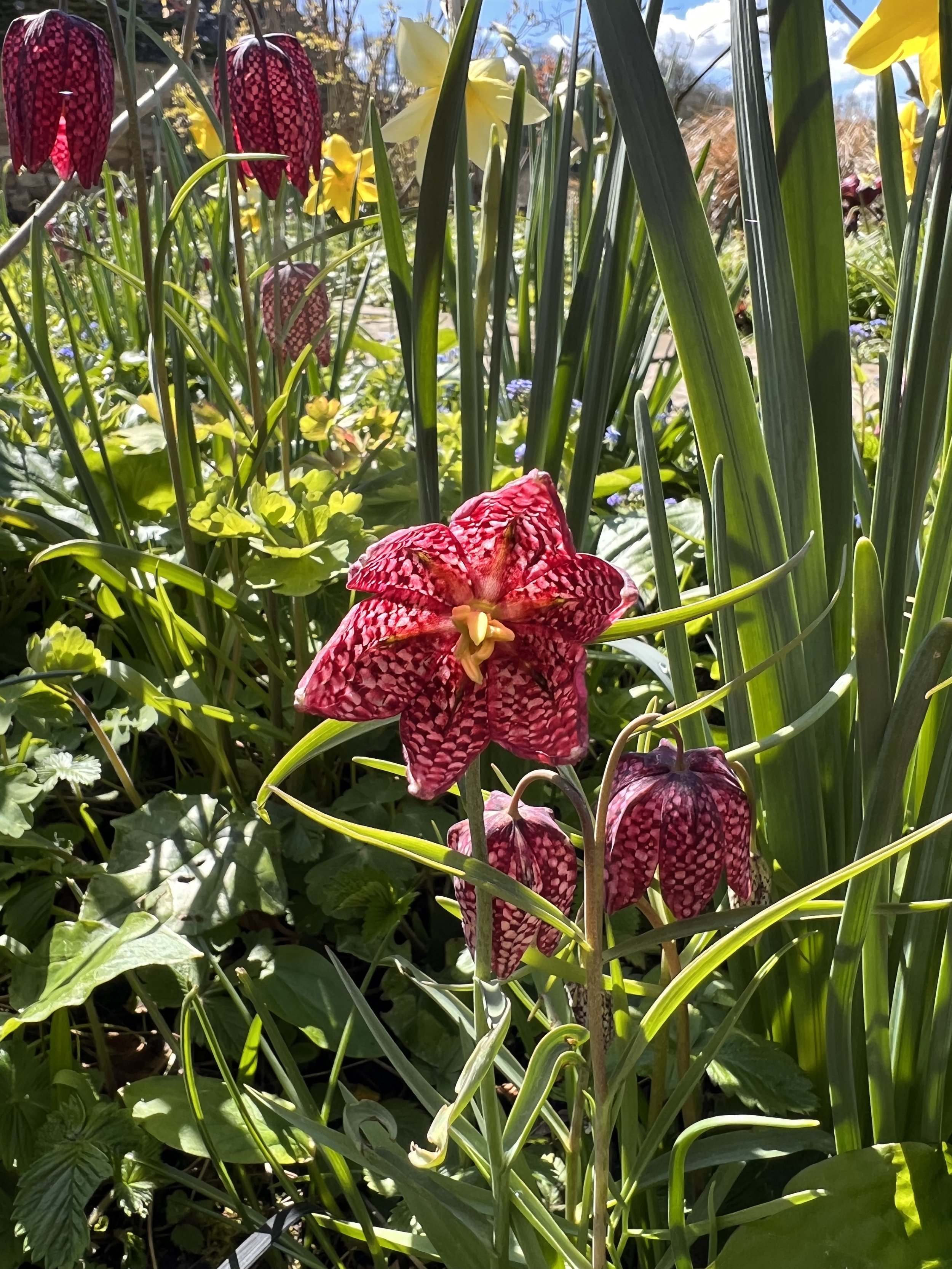Twine & Two Gardens
“Nature is painting for us, day after day, pictures of infinite beauty.”
Chipping Campden
We are now staying in Chipping Campden, inside the Cotswolds Area of Outstanding Natural Beauty (AONB).
The town’s early name was Camp-denu, from Saxon Old English meaning field or enclosure (camp) in the valley (denu). King Henry II gave Campden a Town Charter in about 1175, permitting a weekly market and annual fairs. It is from that time that the name was changed to Chipping Campden, from an old English word “ceping,” meaning “market,” and the High Street, with its market square and burgage plots, was developed. Today it is one of the most well-known villages in the Cotswolds. It also has an amazing covered market hall that was built in 1627.
By the way, the name Cotswolds is a combining of the words “wolds”—meaning gentle hills, with “cots”—meaning sheep enclosures. So the “Cotswolds” were named after the area’s gentle hills and plentiful sheep. Here is an interactive map:
Video tour of Twine Cottage in Chipping Campden: https://www.youtube.com/watch?v=QJvJYsgwpzE
Hidcote Manor
Hidcote is a world-famous Arts and Crafts-inspired garden nestled in a North Cotswold hamlet, created by passionate plantsman and talented designer, Major Lawrence Johnston.
As a member of both the Garden Society and the Royal Horticultural Society, Johnston and the name “Hidcote” have become synonymous with the best forms of many plants, such as Hypericum “Hidcote,” Lavandula “Hidcote,” and Rosa “Lawrence Johnston.”
This past Tuesday we toured the house and its many lush garden spaces.
One of the greatest frustrations of every vacationer is the inability to adequately capture majesty when you see it! If, as Joseph Cornell said that “Beauty should be shared for it enhances our joys,” then perhaps this is why we (collectively as vacationers) futility try to capture beauty when we see it—in the hopes that sharing it will enhance the joy we experience. Whether it transmits through this image or not, this tree gave me pause, its expansive shape and shade indelible.
White flowers—striking amidst the green.
As thought the flowers were not beautiful enough, this butterfly landed and lent its colors too.
Tall box hedges with sculpted topiary yew birds frame the steps down to the Bathing Pool.
A striking aspect of actually noticing spring unfold is the realization that gardens may be at their “peak” in summer, but seeing the garden in summer means you miss these incredible yellow flowers…and the sheer brilliance of the flowering magnolia tree (below).
They may look fake from a distance, but the yellow flowers are real!
“We all want quiet, we all want beauty, we all need space. Unless we have it, we cannot reach that sense of quiet, in which whispers of better things come to us gently.”
It’s difficult to do this tree justice as an image.
Every nook and cranny of the Hidcote Manor garden is beautiful in its own right, but the magnificent pink flowers of this giant magnolia tree simply beckon from every corner of the garden.
The gigantic flowering tree is a sight to behold! 🌸
Snowshill Manor
On Friday we made the short drive to Snowshill Manor.
Charles Paget Wade was an English architect, artist-craftsman, and poet. He was fascinated by anything hand-crafted and made with skill. Over a lifetime he amassed an eclectic collection of more than 22,000 items of furniture, clothing, paintings, and many other pieces which reflected his interest in color, design, and good craftsmanship.
In 1919, after service in France during World War I, Wade purchased the estate at Snowshill. He restored the manor house and then used it to house his collection, choosing to live in a small cottage in the garden.
The construction of the manor house itself was beautiful.
However, I don’t believe writing this blog obliges me toward objectivity, so I’ll say the “collection” inside the house could have easily landed Wade on an episode of Hoarders.
The real reasons to visit Snowshill are the outdoor spaces and the views of the surrounding countryside.
A Green Man genuinely surrounded by green.
Is it just us or does this flower look like a demogorgon from Stranger Things?
Cotswold’s Way
To clear our minds from all the clutter at Snowshill Manor, we made the short drive to The Mount Inn in the village of Stanton.
To whet our appetite, we watched this kitty chow down on a mouse as we walked up to the pub.
Ah, a couple Donnington 1843 Craft Lagers to wash down the mouse flavor.
Donnington Brewery is a local Cotswold’s brewery based in Stow-on-the-Wold.
What a view! What a day! The Cotswold’s Way passes over Stanton’s High Street, so we used the Inn as a launching point to walk a mile or so more of the Cotswold’s Way.
We often see dogs who have found a stick and proudly carry it around for all to admire.
As we followed the Cotswold’s Way through Stanton, we encountered four thatched cottages proudly adorned with finials.
On thatched cottages, straw animal finials are either seen as silly adornments or the crowning glory of a roof.
Two for one
Bookends
As the Way leaves the High Street and enters fields again, we encounter this very friendly horse.
The beautiful Jacobean Stanway House is only open in June, July, & August, but it’s on the Cotswold’s Way, so we used it as a turn around point for our walk.
Besides the wonderful manor house, the property also boasts a restored and fully-operational watermill.
When the house is open there is a gravity-fed fountain that rises to over 300 feet from the center of this pool, making it the tallest fountain in Britain.








































